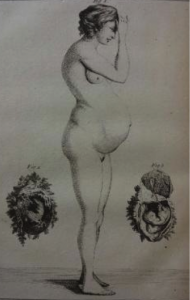Historical Research celebrates International Women’s Day with free access to the following articles on women’s health:
Female barrenness, bodily access and aromatic treatments in seventeenth-century England by Jennifer Evans
Across the seventeenth century medical self-help manuals noted that aromatic substances were a suitable remedy for female barrenness. It has often been suggested that in the early modern period physicians did not touch their patients but instead relied upon patient narrative to diagnose and treat the sick body. This article problematizes this issue by investigating the multi-sensory approach to treating infertility, a disorder invested with concerns of gendered bodily access. It will be demonstrated that the recommendation of aromatic treatments for infertility allowed male physicians a means to negotiate the complex gender boundaries that restricted their access to women’s bodies
‘To[o] much eating stifles the child’: fat bodies and reproduction in early modern England by Sarah Toulalan
This article examines associations between fat bodies and reproductive dysfunction that were prevalent in medical, midwifery and other literature in early modern England. In a period when fertility and successful reproduction were regarded as hugely important for social, economic and political stability such associations further contributed to negative attitudes towards fat bodies that were fuelled by connection with the vices of sloth and gluttony. Fat bodies were categorized as inherently, constitutionally, less sexual and reproductively successful. Consequently they were perceived as unhealthy and unfit for their primary purpose once they had reached sexual maturity: marriage and the production of children.
Medicalizing the female reproductive cycle in rural Ireland, 1926–56 by Ciara Breathnach
This article highlights the parameters of a lifecycles project that was funded by the Irish Research Council for the Humanities and Social Sciences, entitled ‘From the cradle to the grave: lifecycles in modern Ireland (pilot study: maternity)’. The project used individual hospital records to bring the regional effects of ‘medicalization’ outside metropolitan areas into a sharper focus. With an emphasis on rural Ireland from 1926 to 1956, this ‘pilot’ study used longitudinal data modelling to explore the medicalization of the female reproductive cycle in a general hospital and again in a psychiatric hospital setting. The project team chose disparate clinical settings to test how people understood their functions, to see, for example, if medical cases were presenting to the psychiatric setting. This article describes the digitization and data modelling processes and the parameters of the research agenda. It locates the broader medical and statistical findings of the project in their socio-economic context to highlight whether such matters conditioned when and how women resorted to medical care. It discusses the analytical challenges that the project posed and points to avenues of further research and future publications. It concludes that for historical reasons, in the rural Irish context, people engaged more freely with the asylum than the general hospital setting.

